 Throwing a baseball is a difficult feat that necessitates the harmonious coordination of multiple muscles across the body. From the initial windup to the final release, every muscle group plays an important role in the development of power, the attainment of pinpoint accuracy, and the accomplishment of outstanding throwing speeds. In this post, we will delve into the scientific complexities underpinning the skill of throwing a baseball, studying the vast network of muscles that work together to produce this complex motion.
Throwing a baseball is a difficult feat that necessitates the harmonious coordination of multiple muscles across the body. From the initial windup to the final release, every muscle group plays an important role in the development of power, the attainment of pinpoint accuracy, and the accomplishment of outstanding throwing speeds. In this post, we will delve into the scientific complexities underpinning the skill of throwing a baseball, studying the vast network of muscles that work together to produce this complex motion.
Throwing in baseball is more than just a simple motion; it's a symphony of muscle movements arranged with precision. A complicated muscular dance takes place from the moment a pitcher winds up to the moment the ball leaves their hand. Each muscle group adds a distinct set of abilities: some ignite explosive strength, some maintain stability, and a few fine-tune the mechanics to assure accuracy. We acquire a better grasp of how pitchers use their bodies to create the magic that happens on the field by unraveling this sophisticated muscle choreography.
The Kinetic Chain: Muscles Used in Throwing a Baseball
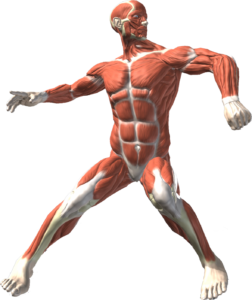 When it comes to the precise mechanics of a baseball pitch, the leg muscles take center stage as the major force generators along the kinetic chain. These muscles are the powerhouses that generate the energy needed to propel the ball with precision and speed. Let's look at the important leg muscles—the calves, quadriceps, hamstrings, and groin—that work together to pump force into the body, allowing for maximum acceleration and performance in a throw.
When it comes to the precise mechanics of a baseball pitch, the leg muscles take center stage as the major force generators along the kinetic chain. These muscles are the powerhouses that generate the energy needed to propel the ball with precision and speed. Let's look at the important leg muscles—the calves, quadriceps, hamstrings, and groin—that work together to pump force into the body, allowing for maximum acceleration and performance in a throw.
- The Calves
The calf muscles, which include the gastrocnemius and soleus, play an important role in the kinetic chain's propulsion. The calves assist in the plantar flexion of the ankle joint as the pitcher commences the throwing motion. This motion allows the pitcher to forcefully push off the mound, transforming stored energy into forward movement. The regulated engagement of the calves guarantees a forceful push-off, kicking off the sequential movement of the kinetic chain. - Quadriceps
Located in the front of the thigh, the quadriceps muscles help to extend the knee joint. The quadriceps contract as the pitcher coils up and prepares to throw, delivering the initial surge of power that puts the kinetic chain in action. This extension action acts as a stimulant for energy transfer from the legs to the upper body, kicking off the throwing sequence.  The Hamstrings
The Hamstrings
The hamstrings, which are placed on the rear of the thigh, serve as a counterbalance to the quadriceps. They aid in the stabilization of the knee joint and the transition from the windup to the acceleration phase during the throwing motion. The regulated contraction of the hamstrings aids in the maintenance of appropriate form while channeling the energy produced by the quadriceps towards the desired forward motion.- The Groin Muscles
The groin muscles also known as adductors, aid in the lateral movement of the legs during the throwing motion. While not as visible as the other leg muscles, the adductors serve an important but subtle function in lower body stability. This stability is essential for properly producing and transferring force, allowing the pitcher to maintain balance and control during the throw. - Muscles of the Core
During the throwing motion, the core muscles, which include the rectus abdominis, obliques, and transverse abdominis, stabilize the spine. A strong core maintains good posture and alignment, which is necessary for producing maximum power and accuracy.
Precision and Power Transfer at the Shoulder Complex
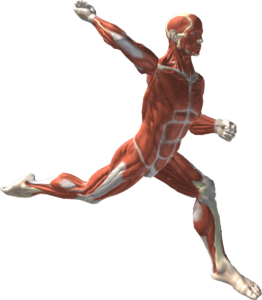 The shoulder complex is an important component of the baseball throw, providing the necessary range of motion and stability for a good release.
The shoulder complex is an important component of the baseball throw, providing the necessary range of motion and stability for a good release.
- Deltoids
During the throwing motion, the deltoid muscles, specifically the anterior deltoid, allow the arm to travel forward. These muscles initiate the arm and help to manage the arm's deceleration following release. - Muscles of Rotator Cuff
To support the shoulder joint, the rotator cuff muscles (supraspinatus, infraspinatus, teres minor, and subscapularis) act together. They manage the rotational forces exerted during the throw to guarantee appropriate alignment and prevent injuries. - Latissimus Dorsi
The latissimus dorsi, or "lats," is important in producing arm speed and power during the throw. These muscles help with arm extension and adduction, allowing for a powerful release.
Fine-Tuning the Mechanics of Arm Action
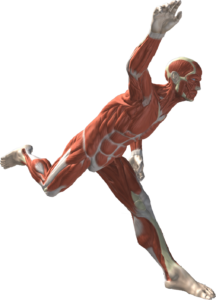 While the major muscle groups lay the groundwork, it is the minute aspects of arm motion that actually optimize a baseball throw.
While the major muscle groups lay the groundwork, it is the minute aspects of arm motion that actually optimize a baseball throw.
- Triceps and Biceps
The biceps and triceps act together to govern elbow flexion and extension. These muscles are essential for controlling the ball's release and maintaining precision. - Flexors and extensors of the forearm
The forearm muscles, particularly the flexors, and extensors, help to control the wrist during the throw. They aid in fine-tuning the ball's orientation and influence the spin rate for various pitch types.
Precision and Fine-Tuning Muscles Used in Throwing a Baseball
Attention must be paid to the finer details of the action in order to reach the maximum degree of performance when throwing a baseball.
- Scapular Supporters
The rhomboids and serratus anterior, which stabilize the scapula, ensure good shoulder mechanics and control throughout the throw. They limit excessive movement and allow for efficient force transmission. - Rotators of the Hips
The piriformis and external rotators, as well as the hip rotator muscles, all contribute to the rotational component of the throw. Their participation improves the overall mechanics of the kinetic chain. - Flexors of the fingers
The flexor muscles in the fingers contribute to grip strength and baseball control. A firm grip is essential for keeping control over varied pitch types.
TopVelocity Programs 3X and 2X Improve Muscle Performance
Harnessing the strength of the leg muscles is critical for achieving an exceptional level in baseball throwing. The TopVelocity Programs, 3X and 2X, provide a complete approach to building these critical muscles, propelling athletes to levels of performance they never imagined possible. Let's look at how these programs help to develop great baseball throwers by optimizing leg muscles.
Unleashing Explosive Power with the 3X Program
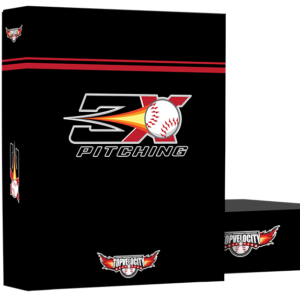 The 3X Program, a cornerstone of TopVelocity's strategy, focuses on kinetic chain synchronization for maximum power generation. This program improves the activation of the essential leg muscles—calves, quadriceps, hamstrings, and groin—in the throwing motion, with a basis founded in biomechanics and functional movement.
The 3X Program, a cornerstone of TopVelocity's strategy, focuses on kinetic chain synchronization for maximum power generation. This program improves the activation of the essential leg muscles—calves, quadriceps, hamstrings, and groin—in the throwing motion, with a basis founded in biomechanics and functional movement.
- Muscle-Specific Training: The 3X Program uses specific workouts to improve the leg muscles' strength, endurance, and explosive power. Athletes build the ability to create force from the ground up by focusing muscle-specific training, which translates into increased velocity and accuracy during the throw.
- Plyometric Integration: The 3X Program incorporates plyometric exercises to focus on the quick muscle contractions required for dynamic motions. These explosive actions mimic the demands of a baseball throw, ensuring that the leg muscles are ready to deliver rapid force transfer during the sequence of the kinetic chain.
Precision and Acceleration with the 2X Program
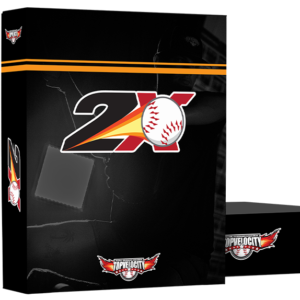 The 2X Program increases leg muscle growth by emphasizing acceleration and precision. This program improves the finer mechanics of the throw by fine-tuning the coordination and timing of the leg muscles.
The 2X Program increases leg muscle growth by emphasizing acceleration and precision. This program improves the finer mechanics of the throw by fine-tuning the coordination and timing of the leg muscles.
- Speed and Agility Work: The 2X Program improves the leg muscles' ability to initiate and control quick movements through agility drills and speed-focused exercises. The muscles become more sensitive to the subtleties of acceleration, resulting in a faster and more explosive throw.
- Kinetic Chain Optimization: The 2X Program's emphasis on kinetic chain optimization guarantees that the leg muscles are seamlessly integrated with the upper body. This synchronization results in a smooth energy transfer, with the leg muscles playing a critical part in moving the entire chain forward.
The TopVelocity 3X and 2X programs provide a comprehensive training method that converts the leg muscles into dynamic force generators. These programs promote a degree of muscular growth that translates directly to enhanced throwing performance by combining focused exercises, biomechanical expertise, and functional movement concepts. TopVelocity provides athletes with the tools they need to harness the full potential of their leg muscles and raise their game to an elite level, whether they are looking for explosive power or precision in the throw.
Questions and Answers (FAQs): Muscles Used in Throwing a Baseball
- What muscles are involved in throwing a baseball?
The quadriceps, glutes, core muscles, deltoids, rotator cuff muscles, latissimus dorsi, biceps, triceps, forearm flexors and extensors, scapular stabilizers, hip rotators, and finger flexors are the primary muscles involved in throwing a baseball. - How can I build up my throwing muscles?
To improve the muscles involved in throwing, incorporate workouts such as squats, deadlifts, planks, and medicine ball throws. Working with a fitness professional can assist you in tailoring a program to your specific needs. - Are there any specific throwing warm-up exercises?
Yes, warming up the muscles and joints before throwing with arm circles, shoulder stretches, and dynamic exercises that mirror the throwing motion can help. - Is proper technique capable of lowering the risk of injury?
Absolutely. Proper throwing mechanics, combined with strength and flexibility workouts, can dramatically lower the incidence of overuse injuries found in baseball players. - Is cross-training advantageous for baseball players?
Yes, cross-training can improve general athleticism, which can lead to better throwing performance. Swimming, yoga, and plyometrics can be used to supplement baseball training. - What can I do to enhance my throwing accuracy?
Consistent practice and a focus on good mechanics are key for developing accuracy. Working with a coach or mentor can provide you useful insights into improving your technique.
A baseball throw is a symphony of coordinated muscle motions. Each factor contributes to a powerful and accurate throw, from the initial leg drive to the fine-tuning of wrist and finger muscles. Understanding and strengthening these muscles will help you improve your throwing skills and overall performance on the field.


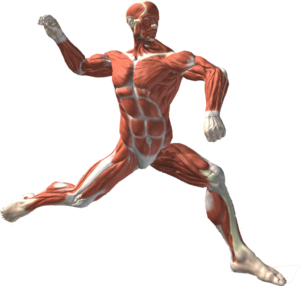 The Hamstrings
The Hamstrings